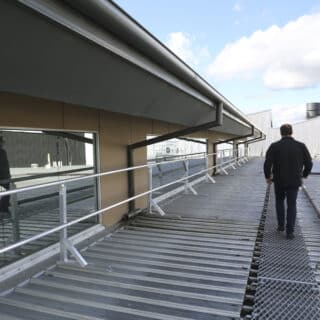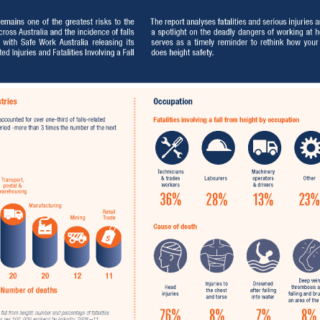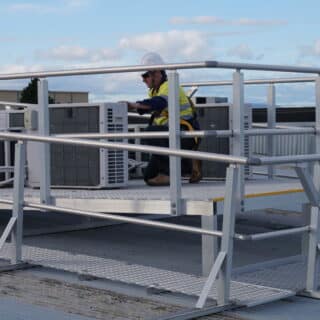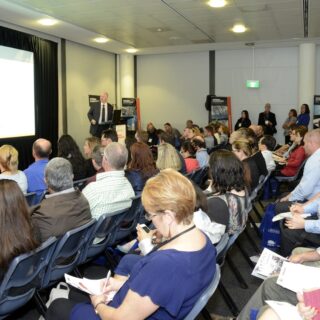Do you know what fragile and brittle surface risks are in your building?
Rain or shine, your roof endures it all. And all that sunshine does more harm than good for your laserlight sheeting, with harsh UV rays making it brittle and a potential danger for any workers on your roof.
Have an older building? A simple misstep or trip on your asbestos sheet roofing could result in cracking, putting hazardous dust and fibre into the air and unsuspecting workers below at risk. Glass surfaces such as skylights without guardrails or mesh covers can also be a trip away from a very serious situation.
As a building or facilities manager, you may not know what surfaces present potential risk. By booking a risk assessment, our expert team can help you identify potential fragile and brittle areas and provide recommendations to mitigate risks.
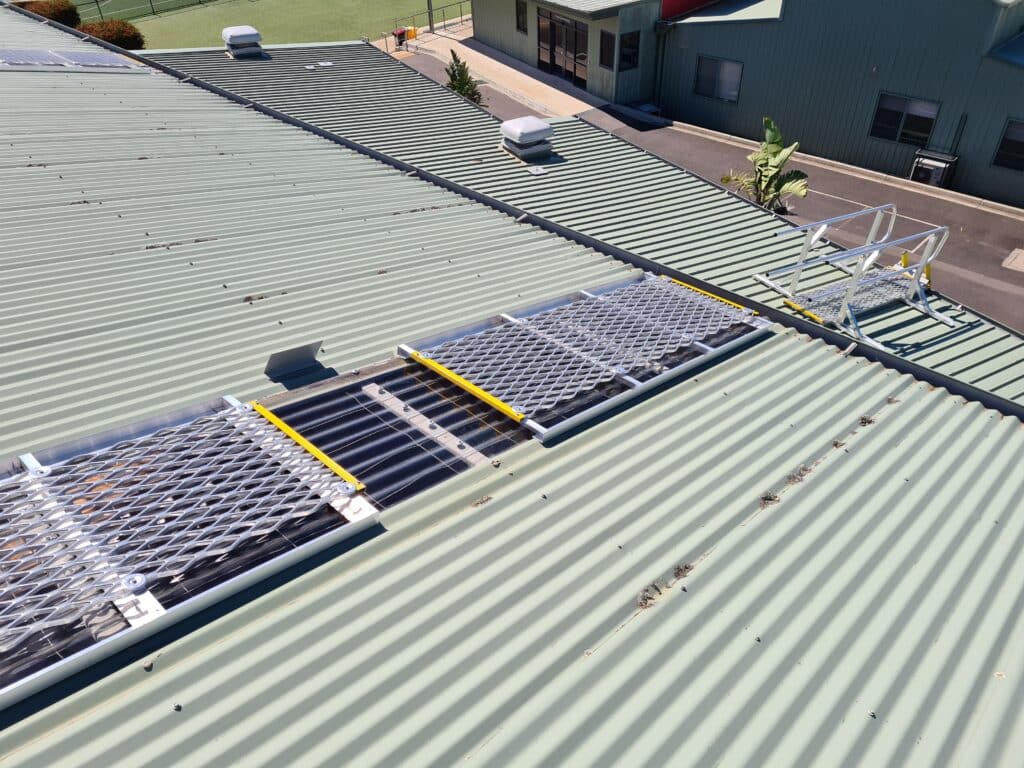
A piece of plywood is not a clear path of travel
During our risk assessments we often find plywood sheets placed over plasterboard in internal ceiling spaces to provide a pathway to equipment. However, rather than decreasing risk it could be increasing it. Trips and falls can still happen (and more easily as there is nothing to stop a fall through), and the additional weight on your ceiling may weaken it.
As expert height safety system designers, we can provide expert advice on how to create a safe path of travel as part of a risk assessment. This includes an action plan and scope of work so you can start implementing our recommendations straight away.
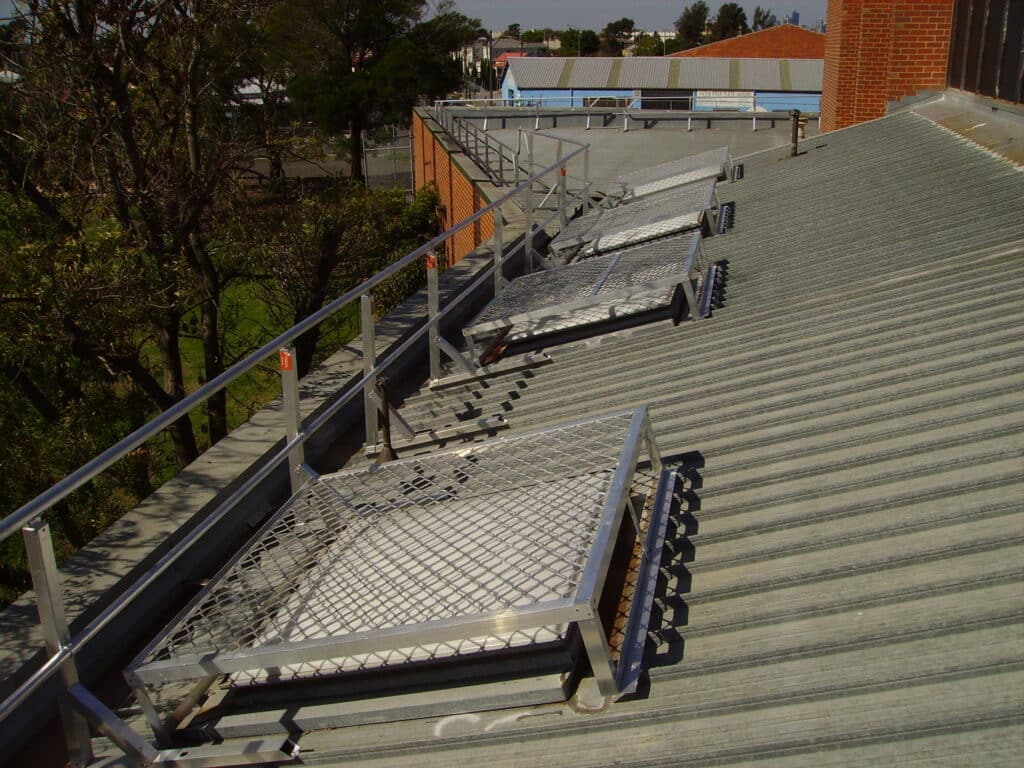
What do you need to safely clean a skylight?
Like any other window, your skylight or glass atrium needs regular cleaning. While a safe pathway of travel over the glass feature may not be possible, using guardrails around it can decrease trips and falls while cleaning is taking place.
To ensure cleaning is completed safely (and efficiently) we can assess all skylights and atriums and provide advice on required height safety systems and equipment. To help you keep on top of your equipment register, we can test and tag all equipment and place it into our online portal for easy management. This way you know exactly what equipment you have where, at any time.
Our risk assessment approach
Applying our 45 years of height safety experience, we’ve worked alongside our risk experts to develop a comprehensive four-step risk assessment and audit process. Designed to help you better identify, manage and mitigate risk, your risk assessment will provide expert recommendations to decrease risk and increase compliance with Australian standards and industry regulations. To help with internal conversations, we also provide budget estimates, scopes of work and layout plans to help you implement changes to your building.
Our risk assessments review each task performed around a fragile or brittle surface, providing a risk level according to your internal risk matrix and the hierarchy of controls. To get the most from your assessment, we recommend booking your risk assessment alongside a full-site risk assessment. This aligns risk assessments for your building, simplifying preventative maintenance schedules, and will be a more cost-effective approach for your business. It’ll also provide you with a more in depth view of overall site risk.
Our 4-step approach
Our risk assessment and audit services all follow the same four-step process and are conducted by independent, certified risk experts. Whether assessing risk for roof access or cooling tower maintenance, you can be confident your risk assessment will be provided to the highest standard.

1. Identify areas and tasks
Our risk experts begin by identifying all maintenance tasks performed near a fragile or brittle surface as well as any surface areas that need to be assessed. By reviewing each task we’re able to identify not only any fragile or brittle surfaces that could create potential hazards but any height safety systems or equipment that may be required for maintenance to be completed safely. It also helps us identify any documentation or training that may be required for the task to be performed safely.

2. Identify hazards and risks
While some hazards may relate to the fragile or brittle surface itself, other potential hazards may be related to the path of travel that puts a worker near the surface. That’s why we review each area, height safety system and piece of safety equipment associated with the task for hazards, assessing the level of risk associated with each. We’ll also assess the level of risk according to your risk matrix and against the hierarchy of controls.
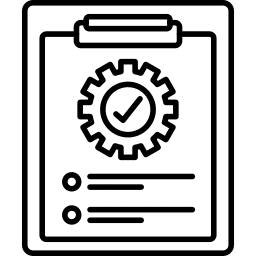
3. Verify compliance
While your height safety system or equipment may be safe, it may not be compliant with Australian standards and industry regulations. Trained in the latest compliance requirements, our experts assess all identified height safety systems and equipment used around fragile or brittle surface areas and provide recommendations to improve compliance. Our NATA certification also allows our team to test on site if required.

4. Reporting & Recommendations
We pull together all risk assessment findings, analysing our results to develop a detailed risk assessment report, complete with summaries and recommendations to reduce risk for each task and area. These recommendations are provided by our certified risk experts and range from physical height safety system changes to decrease user risk to compliance changes to minimise height safety and fall prevention risk.
All our risk assessments include action plans, cost outlines, a scope of work and layout plans to help you start internal risk conversations and implement our recommendations. These can then be added into a business case, funding proposal or provided to construction groups as part of a tender process.
Not sure where to go next after your risk assessment? Our team can guide you to the right solution provider for your needs as well as provide tender support as part of our procurement service.
Risk assessment services by maintenance task
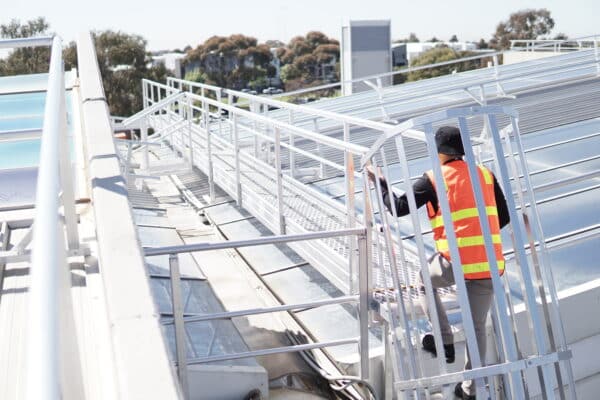
Access to the roof
From ladders to walkways, we’ll assess all ways your workers access your roof.
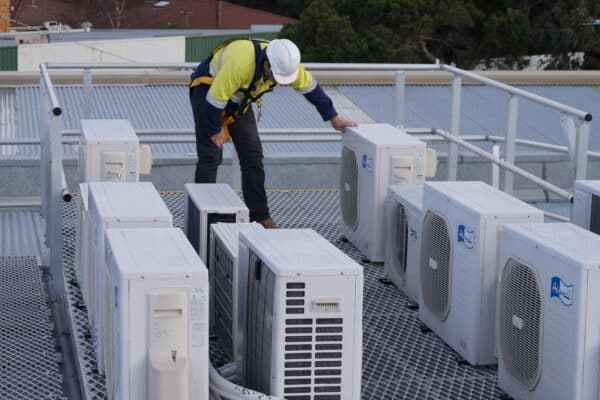
Access to serviceable plant and equipment
Ensuring safe access to plant equipment and HVAC.
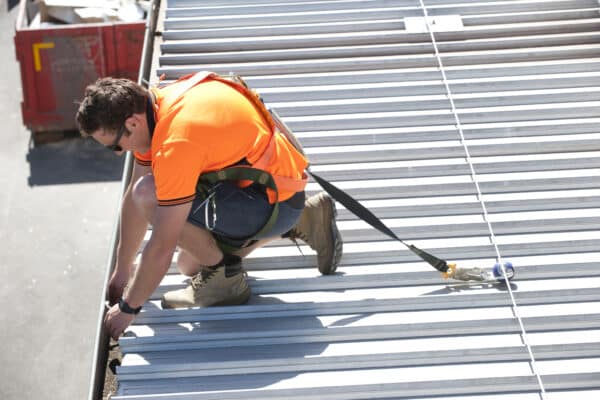
Access to gutter
Reviewing how safe your gutters can be cleaned and accessed for maintenance.
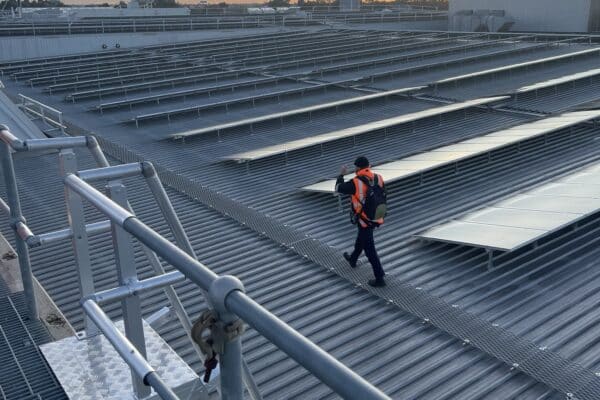
Access to solar panel cleaning
Solar panels take up so much space. But can they be safely accessed?
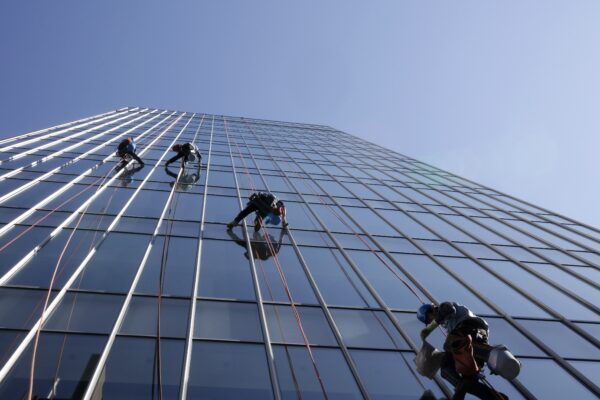
Access to Facade
Assessing all the ways your facade is used for building tasks and maintenance.
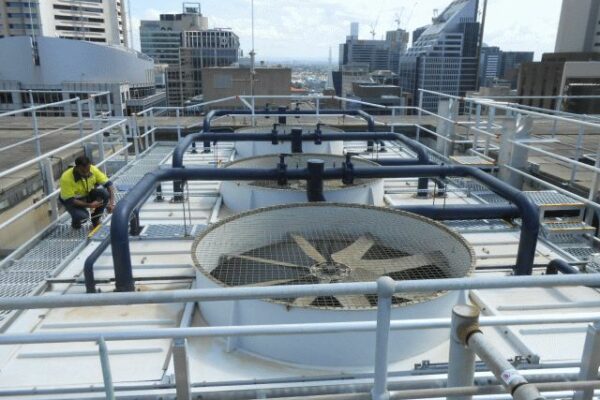
Cooling Tower Maintenance
Are you providing easy and safe access to your cooling towers?
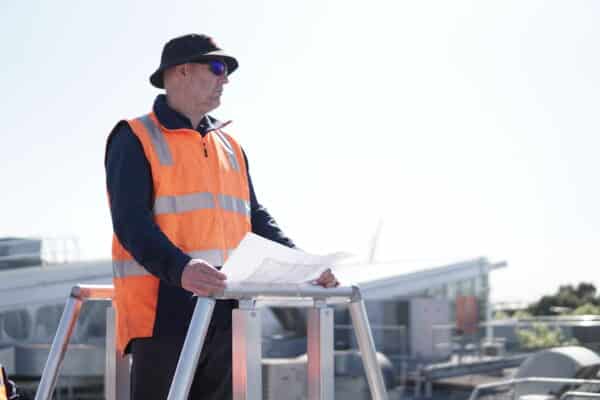
Other areas
Need another area assessed? Our team can provide expert recommendations.
Do you know your current level of risk?
Working at heights can be risky business, not only to workers and contractors but also your business. Take our online height safety tool to assess potential risk to your business.
Use Our Risk Meter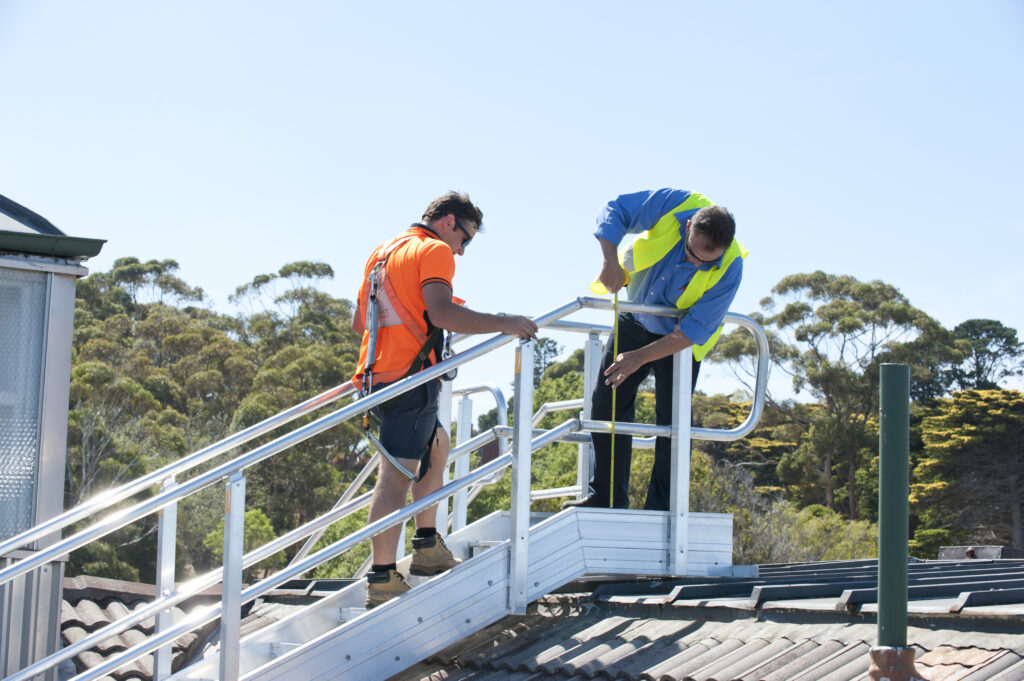
Workplace Access and Safety:
Your height safety and fall prevention experts
Independent height safety experts
- Independent height safety experts
- 45 years’ industry experience
- National certified specialists, inspectors and engineers
- Height safety advice, risk assessments and consulting
Combining years of practical experience and industry expertise, you can be confident in the compliance and safety of your system.
From site assessments and system design to testing, inspections and certifications, we’re here to provide expert advice to keep your business protected and workplace safe.
Decrease your level of risk
Expert tips, tricks and advice from our height safety experts, straight to you.



